Up Next

The Haas VF-22 has so far proved to be one of the best cars the team has produced, and certainly its best of the last three years – not that it took long for it to do better than the previous two disappointing seasons, especially 2021.
Last year, Gene Haas’s team practically always occupied the last two positions on the grid and in the races, and went without developments to save resources ahead of the 2022 rules revolution and the reintroduction of ground effect cars.
This year it took until the Hungarian Grand Prix before the summer break for Haas to change its skin with a full-bodied upgrade. The VF-22 is a good base car, but new parts – Hungary aside – have always been scarce at a team that cannot afford to put a lot of financial resource into developing the car.
There’s little difference from previous years, either – Haas’s goal, which goes back to its debut in 2016, has always been to have an immediately competitive base car, aware that its weakness compared to others is the introduction of aerodynamic updates.
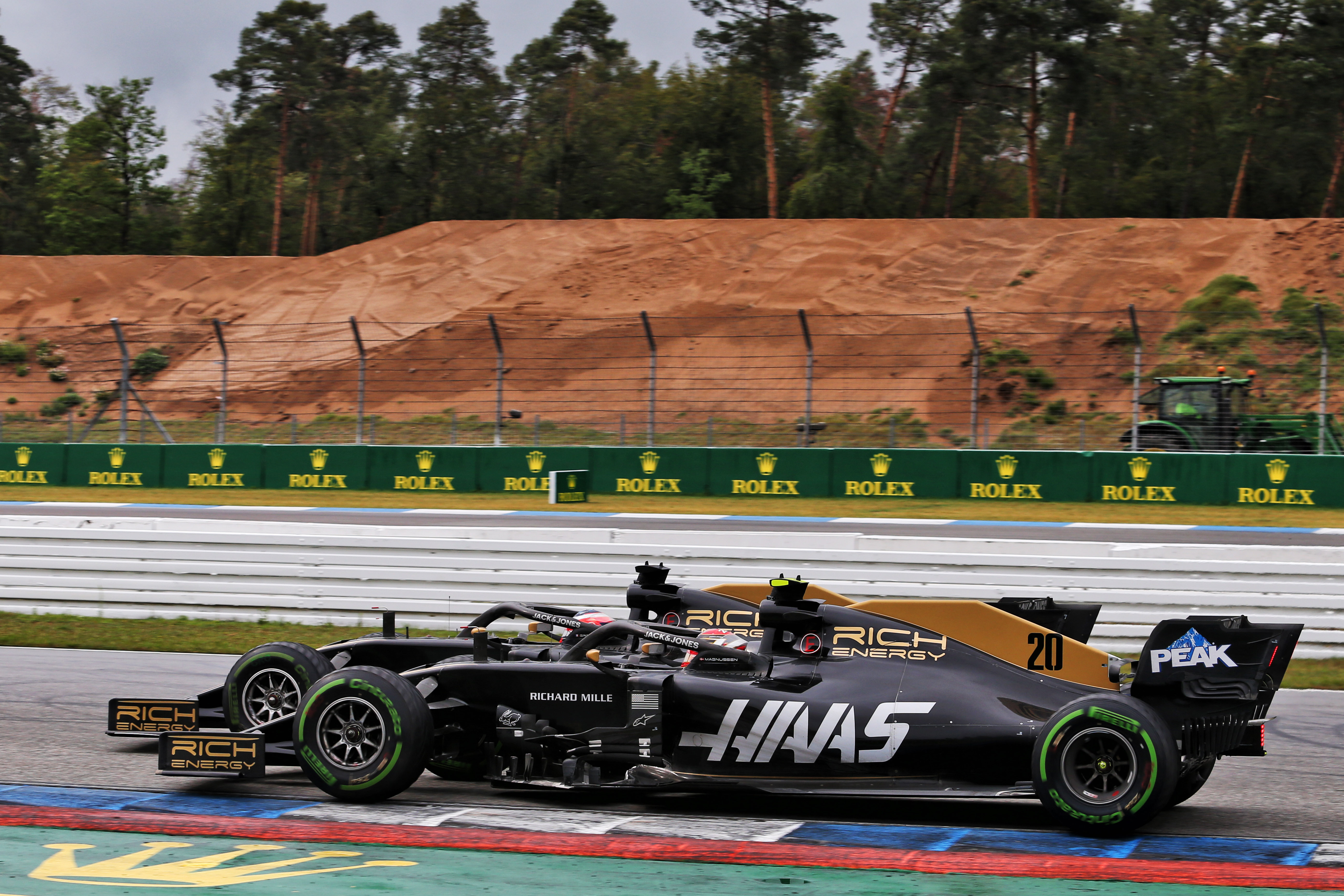
But despite not undergoing major changes from the version raced in Bahrain, Haas’s 2022 car has lost no margin to its direct competitors. At the Austrian Grand Prix last month both its drivers scored points, the first time this had happened since the German GP in 2019 (pictured above).
The Hungary upgrade was used only on one car, Kevin Magnussen’s. Team principal Guenther Steiner said the team had fallen behind on production of some of its spares, but Haas wanted to bring the new specification to Hungary to at least test its upgrade before the summer break to have a direct comparison with the previous version.
Magnussen was given the upgrade because of his relative experience compared to Mick Schumacher, his reference points for the development of the car, and because he was ahead of his team-mate in the drivers’ standings.
Make no mistake: concerning Haas’s technique, the innovations it brought to Hungary were substantial, and with the clear intention of copying the Ferrari F1-75.
The sidepods in this new configuration are equipped with the ‘tank’ that directs the airflow under the rear wing and beam wing. To integrate this solution, the engine cover was also changed and became more similar to Ferrari’s.
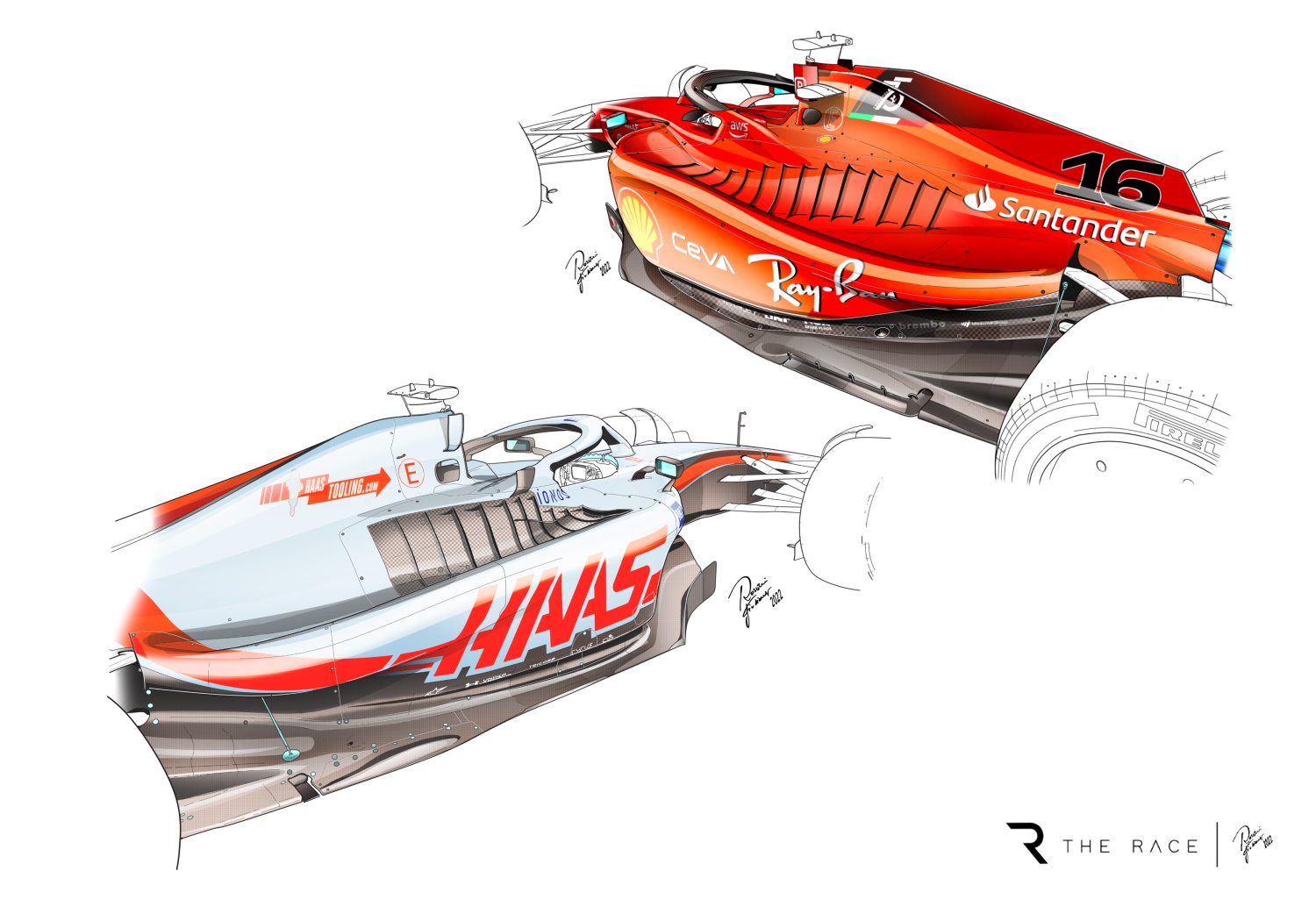
The shape of the cooling openings has changed, and is also adapted to follow the undulating shape of the body. The new bodywork shape is the most noticeable part visually, but there have been other equally important changes.
The rear suspension arms have a different shape, to manage the different motion field of the airflow generated by the shape of the revised engine cover. New rear brake ducts were also added to this, and the the floor was revised extensively in the entrance area of the venturi ducts.
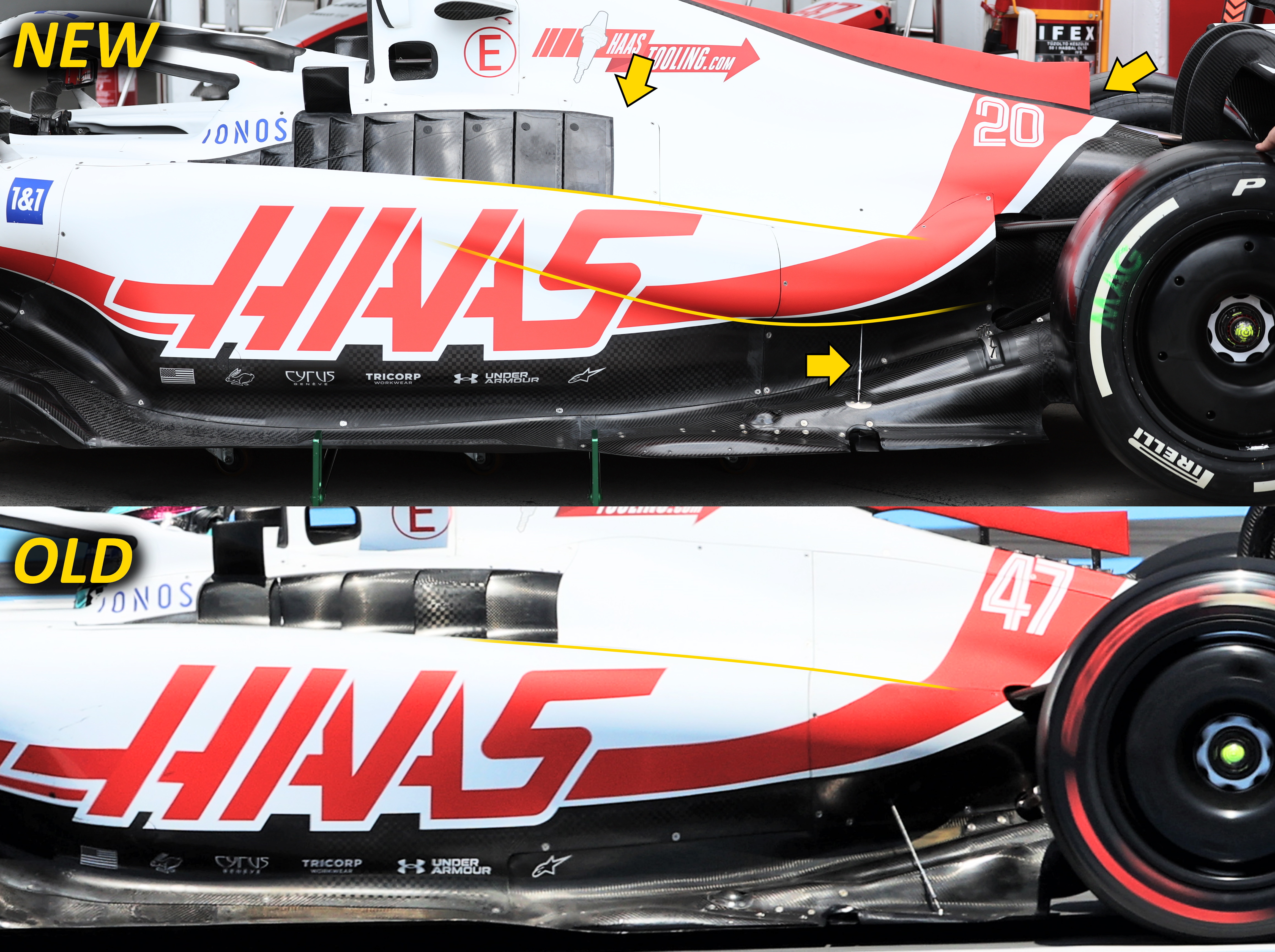
It’s clear that Ferrari and Red Bull are the reference for the development of cars currently, with the current championship-leading RB18 the most copied in concept by other teams.
Teams such as McLaren and Aston Martin, and partly Williams and Alpine, have introduced completely new sidepods, overturning their initial concepts to adopt the Red Bull philosophy.
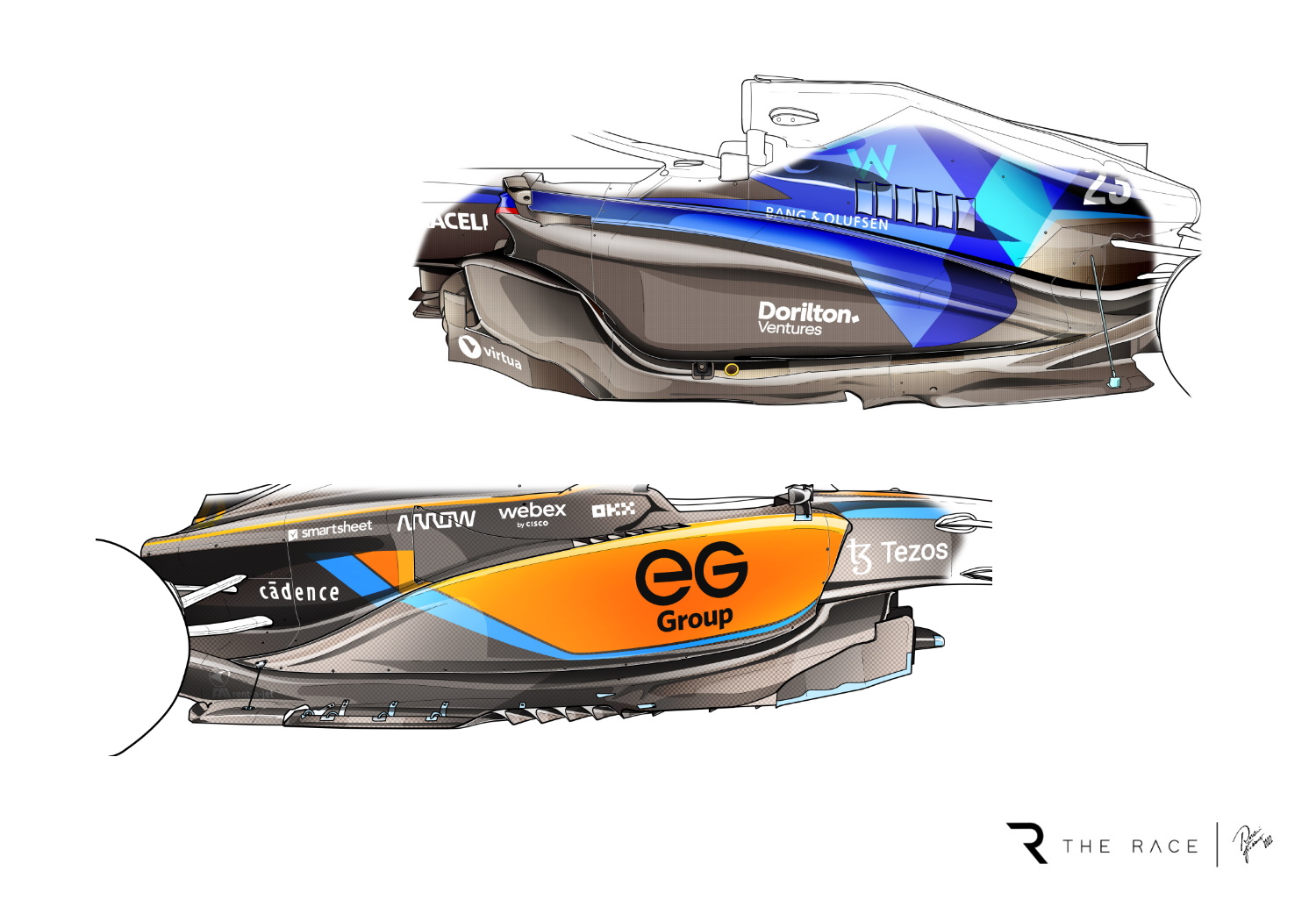
Haas, with the novelties from Hungary, was the first real team to adopt a bodywork truly faithful to that currently present on the Ferrari F1-75.
But why copy the Ferrari F1-75 and not Red Bull like the other teams? The question may seem trivial and the answer obvious. However, there are plenty of reasons – some not so immediately apparent – why Haas has decided to do so that are important to point out.
The obvious part to point out is that it’s no surprise Haas has chosen to copy Ferrari. Its concept has, since 2018 and to varying degrees, been a copy of the previous year’s Ferrari with almost identical aerodynamic solutions. It never reached the Racing Point ‘pink Mercedes’ level of 2020, but in turn was never far from having a ‘copy and paste’ solution.
The Haas chassis is also produced and developed by Dallara, an Italian company that has close relations with Maranello, though there is no passing of documents and projects from one company to the other – this would go against the FIA’s rules.
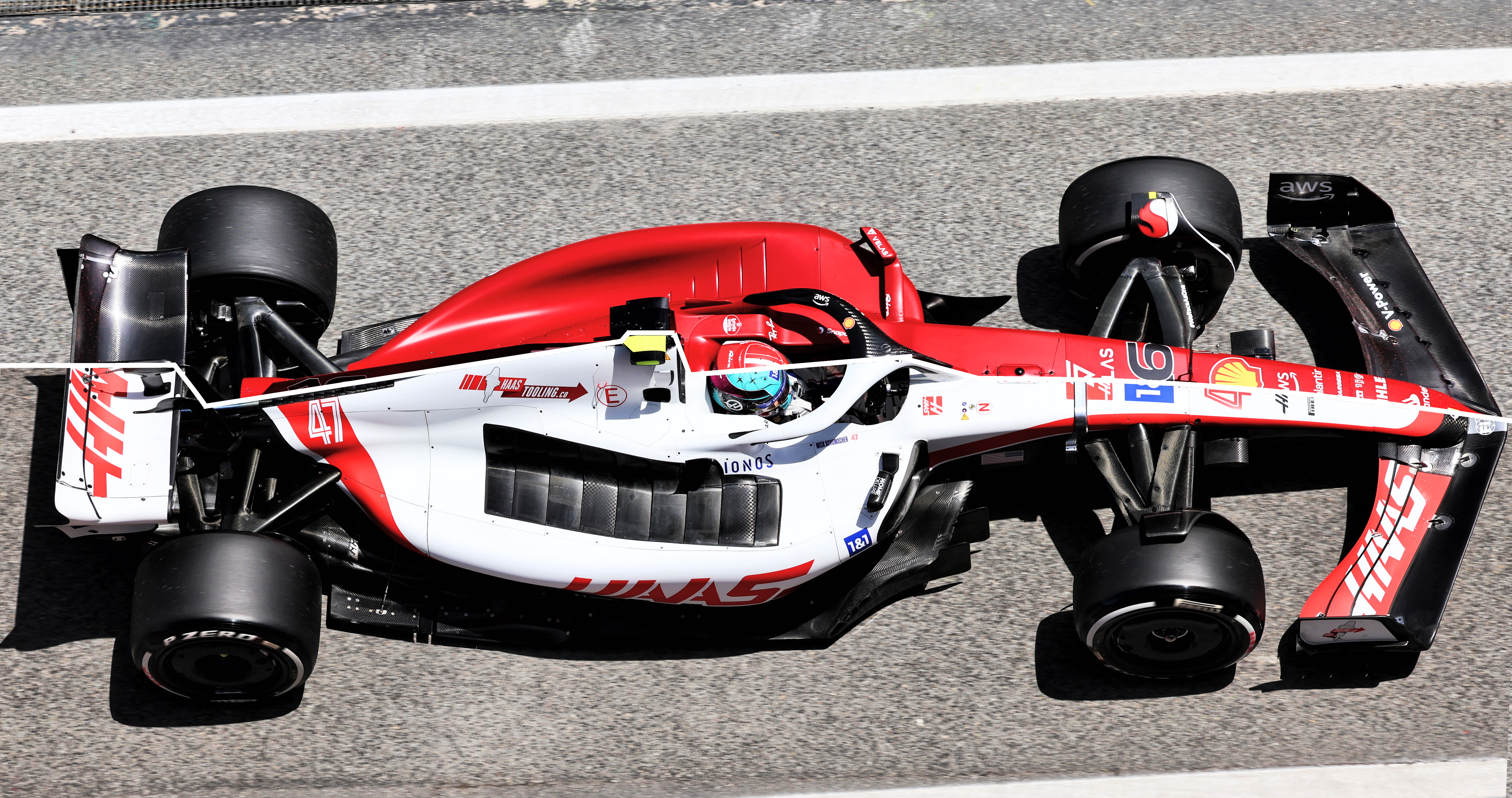
The less obvious part of the decision to draw inspiration from Ferrari has purely been for ease of implementation reasons. Much of the VF-22’s mechanical components, as well as the power unit, are manufactured by Ferrari.
The rear suspension, gearbox, hydraulics and cooling system are transferrable components that can be taken from another manufacturer. The Sauber-run Alfa Romeo team also uses mechanical components from Ferrari, but in a reduced and more detached capacity than Haas. Only the power unit and gears in the gearbox from Ferrari feature in the C42, for example – the gearbox casing, rear suspension and other components are produced by Alfa Romeo itself.
Those internal parts also mean it’s beneficial to make changes on the surface. In Haas’s case, the way heat exchangers are arranged on the Ferrari power unit makes it easier for it to be housed in Ferrari-style bodywork.
Ferrari has chosen with its 2022 project to return to a philosophy more similar to that undertaken in 2019, streamlining the upper part of the engine cover by moving all the radiant masses in the sidepods.
The roll bars of the Ferrari and Haas are both triangular in shape, since the airbox is only used to send air into the combustion chamber. There are no radiators arranged in the upper part as a result. This is an aerodynamic choice that, in addition to lowering the centre of gravity, is useful as it allows a slimmer upper part to bring more air to the beam wing and rear wing, at the expense of more voluminous sidepods.
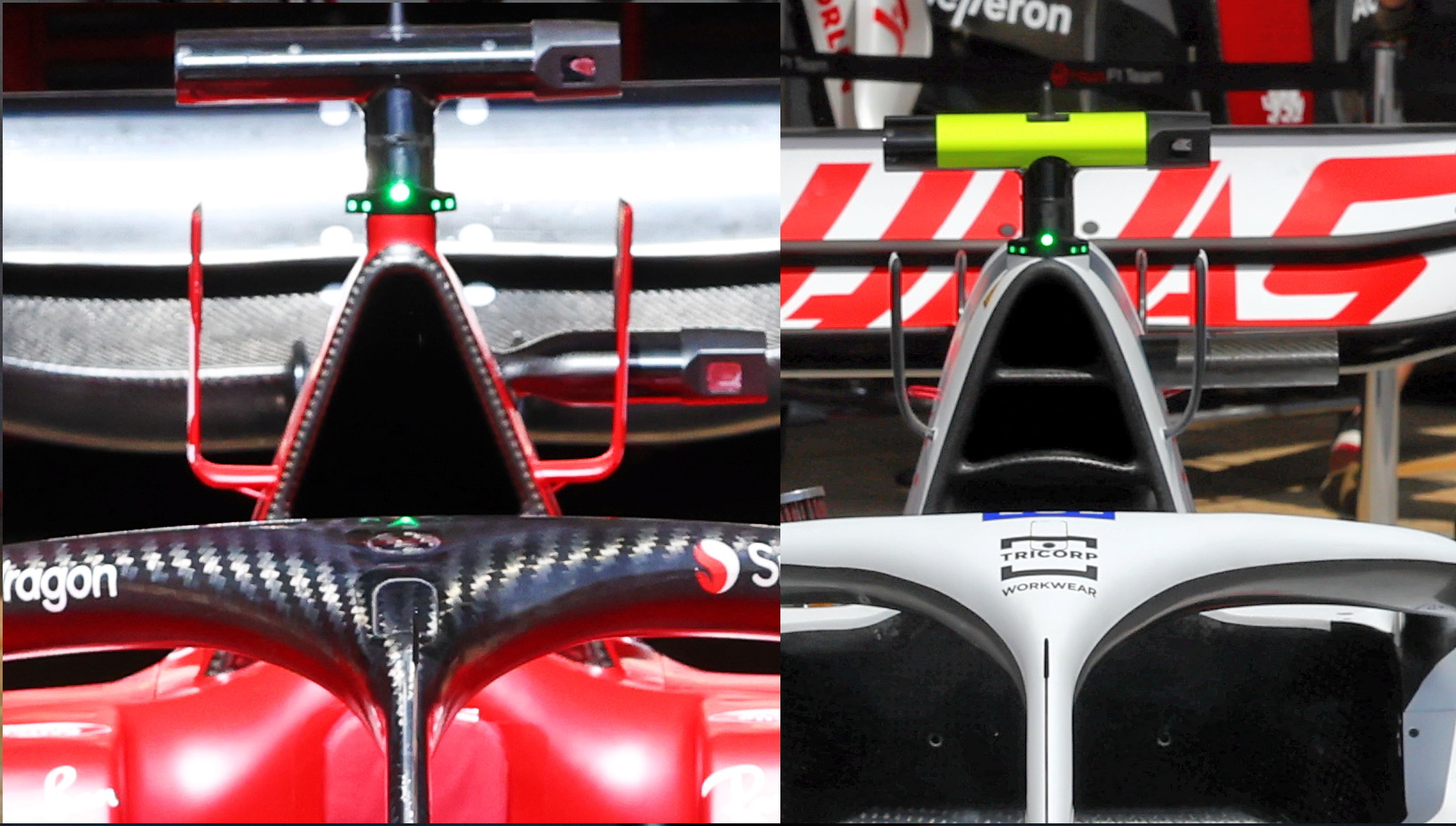
Haas already had an initial concept quite close to that of the F1-75, and it was therefore more practical for the VF-22’s aerodynamics to take inspiration from Ferrari.
At Spa later this month, it is almost certain that we will see the Haas updated for both Magnussen and Schumacher, even if Steiner himself admitted that the changes were very “visual”.
In terms of performance, what Haas showed in Hungary was not a huge step forward. But it could be important for its constructors’ championship hopes; Haas currently has AlphaTauri and Aston Martin as direct competitors for seventh place (they’re seven and 14 points behind respectively), while Williams for now does not seem to be able to match them.






